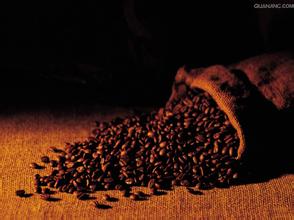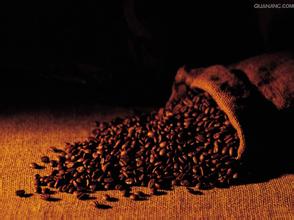Introduction to the quality characteristics of the description method of taste and flavor of manor in coffee bean producing area of Uganda
Introduction to the quality characteristics of the description method of taste and flavor of manor in coffee bean producing area of Uganda
Uganda is a landlocked country in eastern Africa, straddling the equator, bordering Kenya to the east, Tanzania and Rwanda to the south, the Democratic Republic of the Congo to the west and Sudan to the north. Most of the territory is located in the Central African Plateau, many lakes, with an average elevation of 1000,000,1200 meters above sea level. There are many lakes and plateaus in the mountains, which are known as "plateau water villages". The western branch of the East African Rift Valley runs through the western border, with many rivers and lakes at the bottom of the valley. Uganda has a great Victoria lake, coupled with the high mountains, which makes Uganda a mild climate suitable for growing coffee, although it spans both sides of the equator.
The coffee growing industry in Uganda is one of the pillar industries of its exports. Uganda is the birthplace of Robsta in Africa, just as Ethiopia is the origin of Arabica coffee, while Robster coffee was first discovered in Uganda. So far, Uganda has a history of growing coffee for more than 100 years. The output ranks second in Africa, after Ethiopia. At the same time, Uganda is one of the few major countries in Africa dedicated to the production of organic coffee. In Uganda (Uganda), Arabica coffee beans account for only 15% of the country's total coffee production. Uganda's best coffee is mainly produced in the mountains of Elgon and Bugisu along the Kenyan border in the northeast and Ruwensori in the west.
AA: this is a more common grade. Coffee beans are larger in size and have a particle size higher than 18 mesh or 7.22mm. This kind of beans usually get the highest price.
AB: this grade coffee bean combines A (particle size 16 mesh or 6.80mm) with B (particle size 15 mesh or 6.20mm); accounts for about 30 per cent of Kenya's annual coffee production.
C: this grade is lower than that of AB and is rare in high-quality coffee.
TT: a lower grade, mostly consisting of small beans removed from AA, AB, and E beans. If screened by density, the lightest beans are usually TT.
T: the lowest grade, usually made up of coffee crumbs and broken beans.
MH | ML: these two abbreviations stand for Mbuni Heavy and Mbuni Light. Mbuni means coffee beans that are sun-treated. These beans are considered to be of low quality, usually with immature or overripe coffee beans, and the price is quite low. This grade accounts for about 7% of Kenya's annual coffee production.

Important Notice :
前街咖啡 FrontStreet Coffee has moved to new addredd:
FrontStreet Coffee Address: 315,Donghua East Road,GuangZhou
Tel:020 38364473
- Prev

An introduction to the description of the flavor and taste of coffee producing areas in the altitude highlands of Honduras
According to the flavor and taste of coffee producing areas in the highlands of Honduras, there are 280000 hectares of coffee gardens in Honduras, mainly small coffee merchants, most of which are less than 3.5ha, which account for 60% of Hongguo's production. In the coffee garden, people collect coffee beans by hand, then handle them carefully and process them to meet the needs of the market.
- Next

Introduction to the producing areas of varieties and manors by the method of describing the flavor of Tarazhu coffee beans in Costa Rica
Costa Rican Tarazu Coffee Bean Flavor description method Variety Manor production area introduces Laminita Farm in Tarazhu producing area, its strict management has established a world-class reputation and is popular in European and American markets for more than half of the century. it can be called a world-famous coffee farm. Lamini Tower means a small gold mine. Before the Spanish colonization, the Indians used to dig gold at the present farm location.
Related
- Detailed explanation of Jadeite planting Land in Panamanian Jadeite Manor introduction to the grading system of Jadeite competitive bidding, Red bid, Green bid and Rose Summer
- Story of Coffee planting in Brenka region of Costa Rica Stonehenge Manor anaerobic heavy honey treatment of flavor mouth
- What's on the barrel of Blue Mountain Coffee beans?
- Can American coffee also pull flowers? How to use hot American style to pull out a good-looking pattern?
- Can you make a cold extract with coffee beans? What is the right proportion for cold-extracted coffee formula?
- Indonesian PWN Gold Mandrine Coffee Origin Features Flavor How to Chong? Mandolin coffee is American.
- A brief introduction to the flavor characteristics of Brazilian yellow bourbon coffee beans
- What is the effect of different water quality on the flavor of cold-extracted coffee? What kind of water is best for brewing coffee?
- Why do you think of Rose Summer whenever you mention Panamanian coffee?
- Introduction to the characteristics of authentic blue mountain coffee bean producing areas? What is the CIB Coffee Authority in Jamaica?

